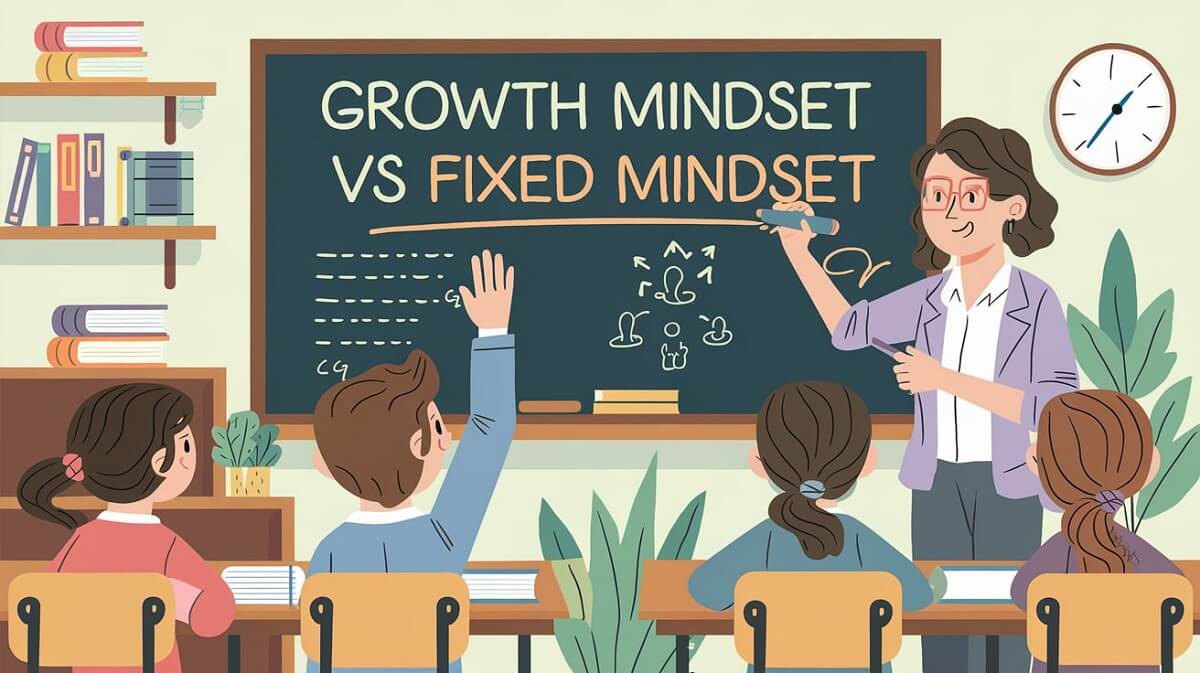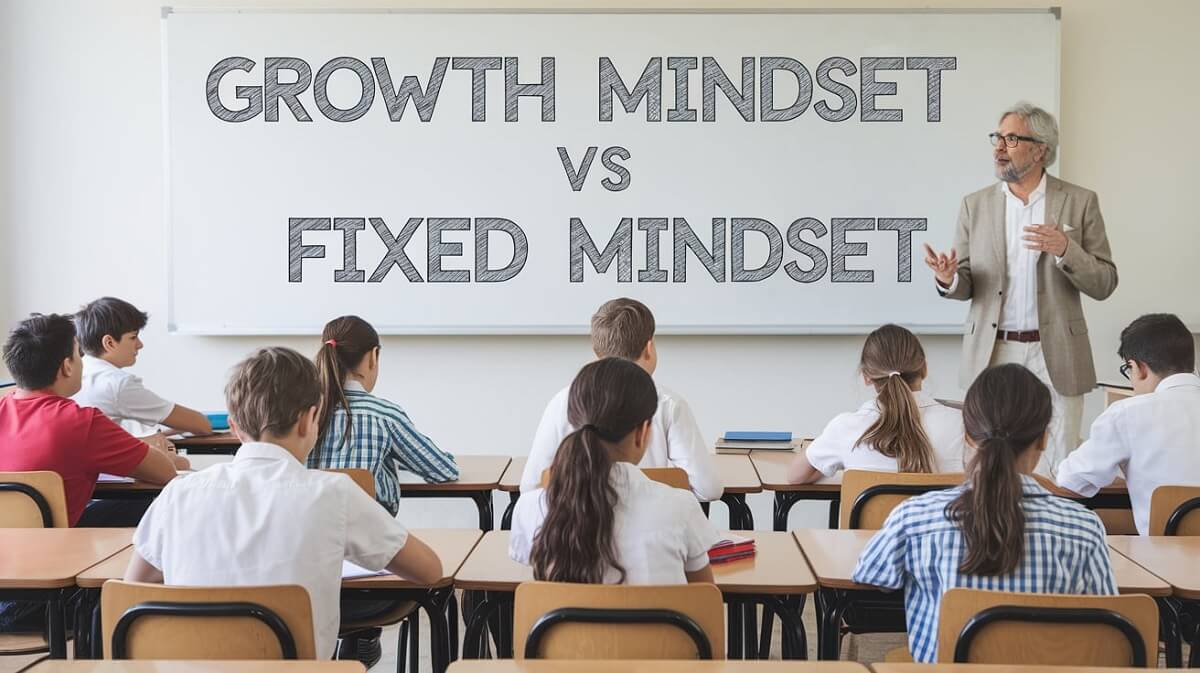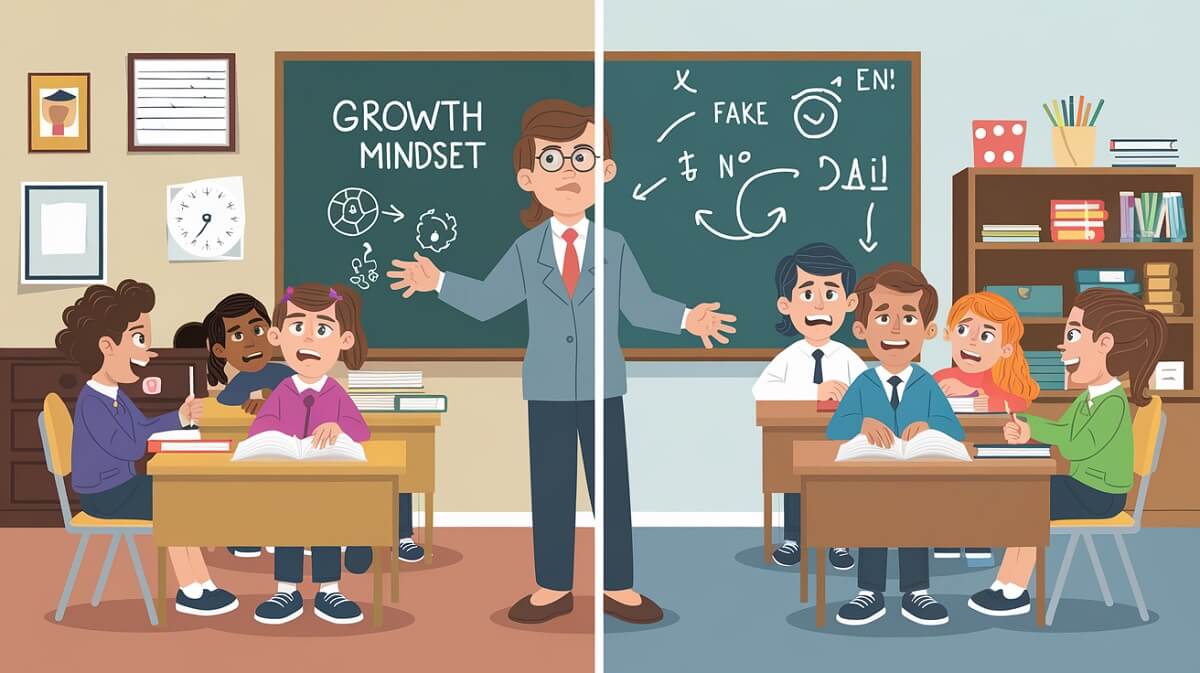
Have you ever felt like some tasks are beyond your abilities? Maybe you’ve thought, “I’m just not good at math,” or “I’ll never be able to speak in front of an audience.” These thoughts are common, especially among students. But did you know the way you think about your abilities—your mindset—can make all the difference?
In this article, we will explore the good ideas of a growth mindset and a fixed mindset, emphasizing their differences and impacts on how they impact students. You’ll learn what these mindsets are, how they affect learning and performance, and, most importantly, how to develop a growth mindset. With practical advice, relatable examples, and research-backed insights, this guide will help you or your student embrace challenges and unlock potential.
What Is a Growth Mindset?
A growth mindset is the belief that skills and abilities can develop through consistent effort, dedication, and a commitment to learning. Psychologist Dr. Carol Dweck, who coined the term, explains that individuals with a growth mindset see challenges as opportunities to improve rather than barriers to success.
Characteristics of a Growth Mindset in Students

-
Embraces Challenges: They see complex tasks as a chance to grow.
-
Believes in Effort: They understand that hard work leads to improvement.
-
Seeks Feedback: Constructive criticism is viewed as helpful, not personal.
Let’s look at Riya, a student who struggled with writing essays. Instead of giving up, she sought help, practiced regularly, and improved her writing skills. Her growth mindset transformed her initial frustration into academic success.
What Is a Fixed Mindset?
A fixed mindset is the view that intelligence and abilities are static and unchangeable. Students with this mindset often think, “I’m just not good at this” or “I’ll never improve no matter what I do.”
Characteristics of a Fixed Mindset in Students

-
Avoids Challenges: They steer clear of tasks they might fail at.
-
Disregard Feedback: Constructive criticism feels like an attack.
-
Believes in Innate Talent: Success is seen as something natural, not earned.
Consider Arvind, who believed he wasn’t good at sports. Whenever his coach suggested ways to improve, he ignored the advice, convinced it wouldn’t help. His fixed mindset kept him from reaching his potential on the field.
Differences Between Growth Mindset and Fixed Mindset

| Aspect | Growth Mindset | Fixed Mindset |
| Belief about Abilities | Abilities can be developed through effort and learning. | Abilities are innate and unchangeable. |
| View on Challenges | Sees challenges as opportunities to grow. | Avoids challenges to prevent failure. |
| Response to Failure | Views failure as a learning experience. | Views failure as a reflection of inability. |
| Effort | Believes effort is essential for improvement. | Believes effort is unnecessary if talent exists. |
| Feedback | Welcomes feedback to improve skills. | Rejects feedback, seeing it as criticism. |
| Learning Approach | Focuses on mastering new skills and knowledge. | Sticks to what is already known or feels safe. |
| Attitude Towards Risk | Willing to take risks and try new things. | Avoids risks to maintain comfort and avoid failure. |
| Success of Others | Inspired by the success of others. | Feels threatened or jealous of others' success. |
| Problem-Solving | Approaches problems creatively and with persistence. | Gives up easily when problems arise. |
| Self-Perception | Believes abilities can always improve. | Believes abilities are fixed and unchangeable. |
Impact on Academic Performance
A student’s mindset significantly influences their academic performance. With a growth mindset, students see challenges as chances to grow rather than barriers to overcome. They understand that effort and persistence can lead to improvement, even in areas where they initially struggle. For instance, a student struggling with a mathematics test might review their errors, seek guidance, and invest additional effort in practicing. This approach enhances their understanding and builds resilience, paving the way for long-term academic success. Studies reveal that students with a growth mindset are 43% more likely to achieve higher grades because they embrace Feedback and focus on progress over perfection.
In contrast, a fixed mindset often hinders academic growth. Students with this belief system view intelligence as static, leading them to avoid challenges for fear of failure. For instance, students who struggle with public speaking may refuse to participate in class presentations, believing they lack the “natural talent” required to succeed. Over time, this avoidance can result in missed learning opportunities and stagnation. Fixed mindset students often struggle to recover from setbacks, as they perceive failure as a reflection of their innate abilities rather than an invitation to grow.
Benefits of a Growth Mindset for Students
1. Academic Success
Students with a growth mindset are more likely to take on complex subjects and persist in overcoming obstacles.
-
Study Insight: Schools encouraging growth mindsets reported a 25% improvement in academic performance.
2. Emotional Resilience
These students handle failure better, seeing it as a learning experience rather than a setback.
-
Example: Failing a test motivates them to study harder, not give up.
3. Lifelong Learning Skills
A growth mindset fosters adaptability and persistence, skills that benefit students throughout their lives.
Challenges of a Fixed Mindset for Students
1. Fear of Failure
Fixed mindsets often create a fear of trying new things, leading to missed opportunities.
2. Lack of Motivation
Believing success is tied to talent discourages effort.
3. Difficulty with Problem-Solving
Fixed mindset students are less likely to develop critical thinking skills.
How to Develop a Growth Mindset
For Students
-
Shift Your Thinking: Replace “I can’t do this” with “I can learn this.”
-
Celebrate Progress: Focus on the end goal, not just how far you’ve come.
-
Embrace Mistakes: See failures as valuable lessons for growth and improvement.
For Teachers
-
Encourage Effort: Praise students for trying, not just succeeding.
-
Provide Constructive Feedback: Focus on what students can do to improve.
For Parents
-
Avoid Labels: Don’t say, “You’re so smart.” Instead, praise effort and persistence.
-
Model a Growth Mindset: Share your experiences of overcoming challenges.
Research Insights and Evidence
Expert Opinion
Dr. Carol Dweck’s research shows that teaching a growth mindset improves motivation and performance in students.
Statistical Data
-
Students with a growth mindset are 43% more likely to achieve higher grades.
-
Growth mindset programs in schools lead to increased student engagement and attendance.
Common Myths About Growth Mindset
1. Growth Mindset Guarantees Success
-
Reality: Success requires effort and the right strategies, not just a positive outlook.
2. Growth Mindset Is About Always Being Positive
-
Reality: It involves realistic optimism, learning from setbacks, and not ignoring challenges.
FAQs About Growth and Fixed Mindsets
1. What’s the difference between growth and fixed mindsets?
A growth mindset highlights the belief that intelligence and abilities can grow with effort, dedication, and a willingness to learn. Students with a growth mindset face challenges as opportunities to grow and are more willing to take risks and embrace Feedback. In contrast, a fixed mindset relies on the idea that talent and intelligence are innate traits. Fixed-mindset students often avoid challenges, fear failure, and may give up when faced with obstacles.
2. Can a fixed mindset change?
Yes, a fixed mindset can change with self-awareness and deliberate effort. Students can begin by recognizing their limiting beliefs and reframing them. For example, replacing thoughts like “I’m just not good at this” with “I can learn how to improve” fosters growth. Practicing persistence, celebrating small victories, and seeking Feedback also help shift thinking. Individuals can adopt a growth mindset and thrive with consistent practice and support.
3. How do teachers encourage a growth mindset?
Teachers can foster a growth mindset by praising effort, strategy, and persistence rather than just outcomes. Encouraging curiosity and critical thinking allows students to see challenges as learning opportunities. Offering constructive Feedback centered on growth and improvement helps students recognize their potential. Teachers can demonstrate a growth mindset by sharing their experiences of overcoming setbacks and highlighting the importance of persistence.
4. What are the benefits of a growth mindset in school?
A growth mindset equips students with resilience, adaptability, and a willingness to embrace challenges. This leads to better academic performance, as students are more likely to persevere and learn from mistakes. They develop problem-solving skills and are less discouraged by failures, using setbacks as opportunities to improve. Over time, a growth mindset fosters a positive attitude toward learning, helping students achieve long-term academic and personal success.
5. How can parents help develop a growth mindset?
Parents always play a crucial role in nurturing a growth mindset by emphasizing effort and perseverance over simply focusing on outcomes. Instead of labeling children as “smart” or “talented,” parents can praise their hard work and problem-solving strategies. Sharing personal stories of overcoming challenges reinforces the idea that improvement is possible through effort. By modeling a growth mindset and providing support during failures, parents can help their children build confidence and resilience.
Conclusion
Your mindset shapes how you approach challenges, learn, and grow. A growth mindset encourages students to face challenges, learn from their mistakes, and realize their full potential. It’s not about instant success but steady improvement and resilience.
Start today by changing how you think about challenges. Remember, every step toward a growth mindset brings you closer to becoming the best version of yourself.
Personal Development Self Improvement




